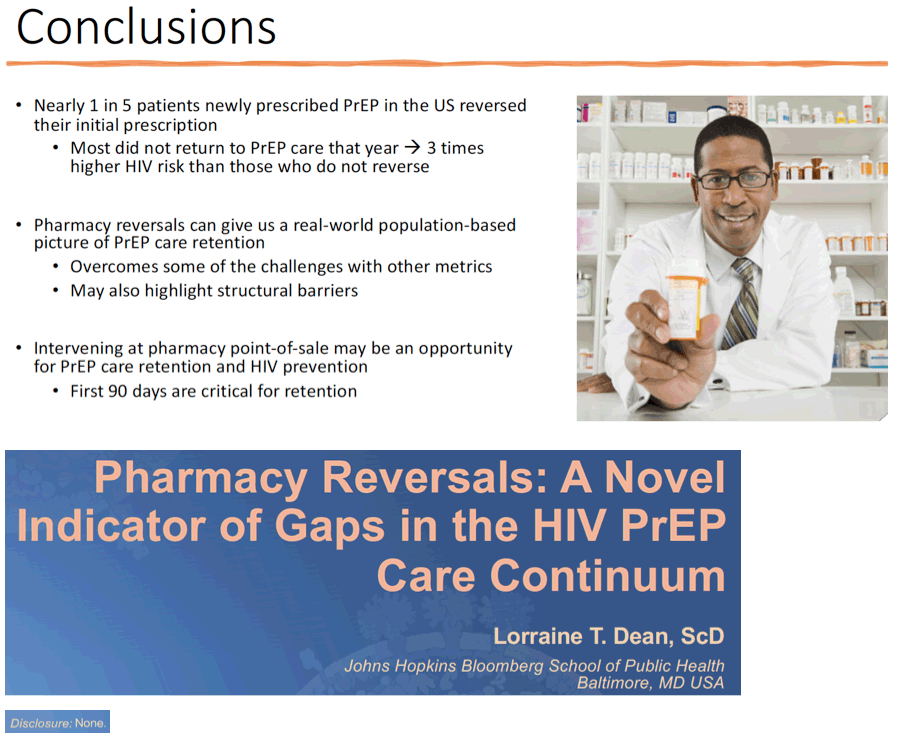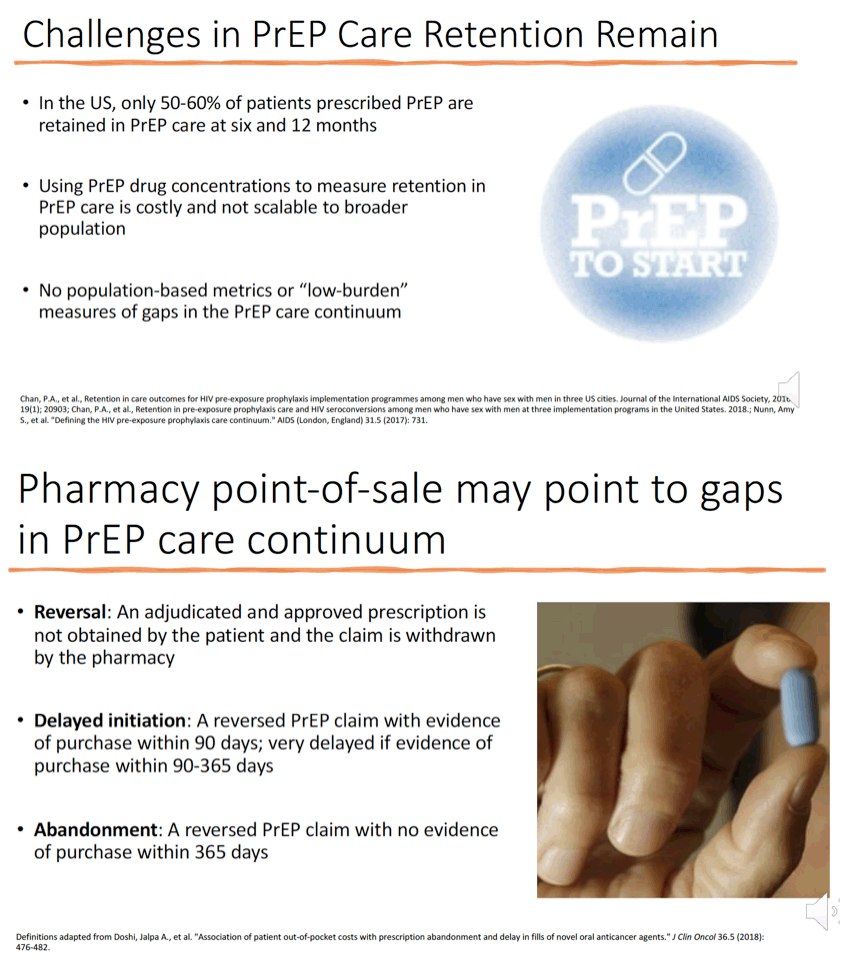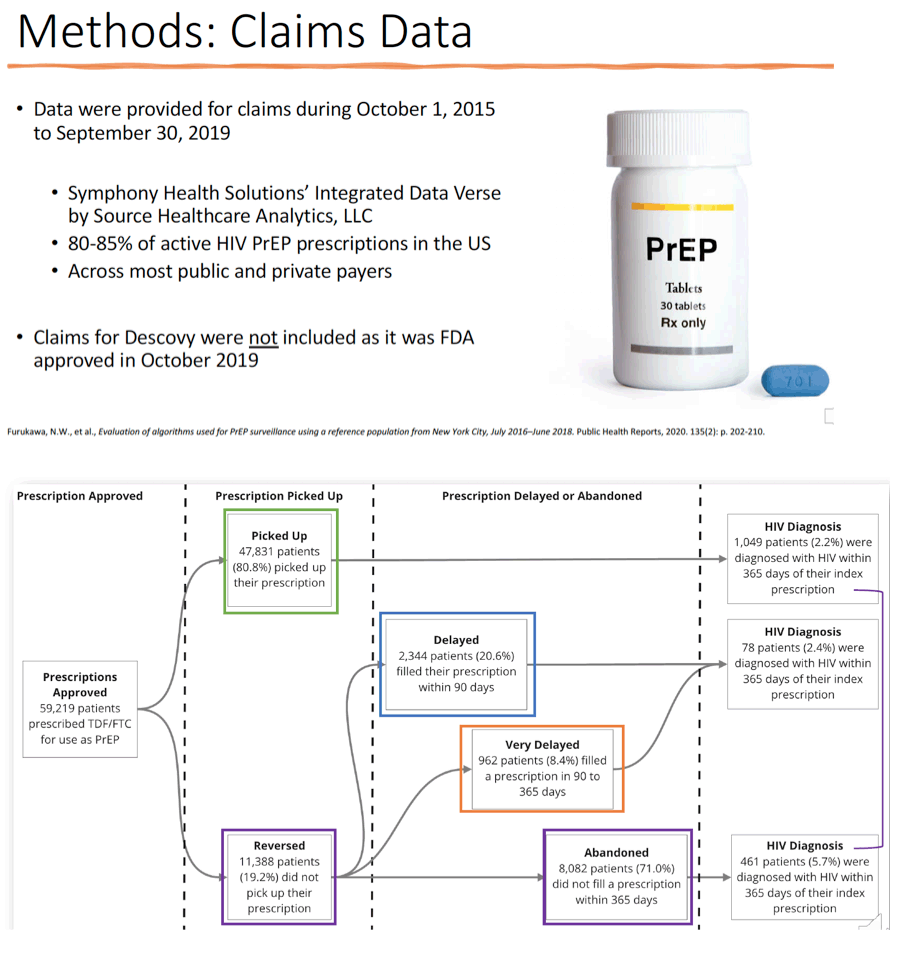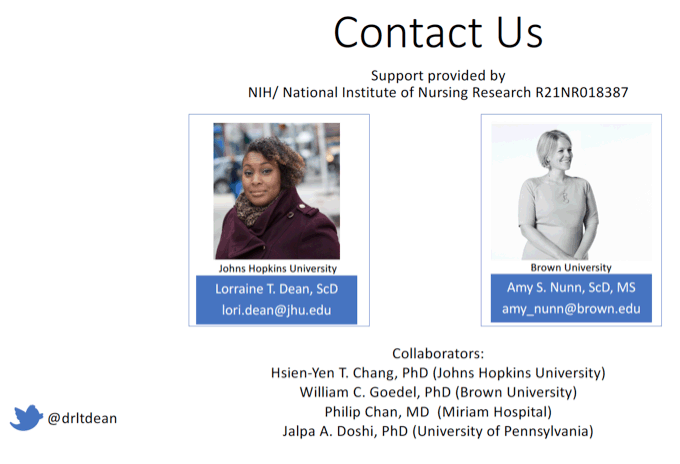| |
PHARMACY REVERSALS: A NOVEL INDICATOR OF GAPS IN THE HIV PrEP CARE CASCADE
|
| |
| |
1The Johns Hopkins Bloomberg School of Public Health, Baltimore, MD, USA, 2Brown University, Providence, RI, USA, 3The Miriam Hospital, Providence, RI, USA, 4University of Pennsylvania, Philadelphia, PA, USA
Background: HIV PrEP retention in care is suboptimal with only 50-60% of patients retained in care at 12 months. Common biometric metrics for assessing PrEP persistence may be expensive, infeasible, or burdensome for patients to report in real-time. We introduce PrEP reversals, defined as when patients fail to pick up PrEP prescriptions, as a novel metric for population-based HIV PrEP persistence and a real-time indicator of gaps in the HIV care cascade.
Methods: We used a national claims database with up to 75% of all PrEP prescriptions in the United States. Data included claims from October 1, 2015 to September 30, 2019 across all public and private pharmacy types and across all US states. Patients were the unit of analysis. After using a multi-step process to identify HIV PrEP claims, we calculated the percentage of total index HIV PrEP insurer-approved prescription claims that were reversed (i.e. not picked up by the patient and claim withdrawn by the pharmacy). Among those with an initial reversal, we estimated the proportion who delayed (picked up within 90 days), partially abandoned (picked up between day 90 and day 365), or completely abandoned (reversed and not picked up within 365 days) their PrEP prescription over a 12-month period. For each metric, we calculated the percentage of PrEP patients who were later diagnosed with HIV.
Results: In our sample of 91,588 patients with 12-months of follow-up data, 14.5% had their index prescription reversed. Of these, 24.9% delayed initiation. Of those not picking up within 90 days, 12.3% filled PrEP between day 90 and day 365 whereas 87.3% did not fill any PrEP. Those who picked up after an initial reversal took an average of 194 days. Among those who completely abandoned their PrEP, 5.7% were diagnosed with HIV - nearly 3 times higher than those who picked up a prescription at some point.
Conclusion: Nearly 15% of patients do not pick up their PrEP from the pharmacy, and are at risk of being lost to PrEP care. Roughly two-thirds of patients who reversed their initial prescription ended up not picking up a prescription within 365 days, leaving them at greater risk of HIV. PrEP reversals give a national "lower bound" estimate of PrEP persistence using real-world and real-time data. This novel metric can be used for population-based surveillance, as a marker of those in need of HIV risk reduction intervention, or as an outcome for pharmacy-based interventions to improve PrEP persistence and reduce HIV risk.




|
|
| |
| |
|
|
|